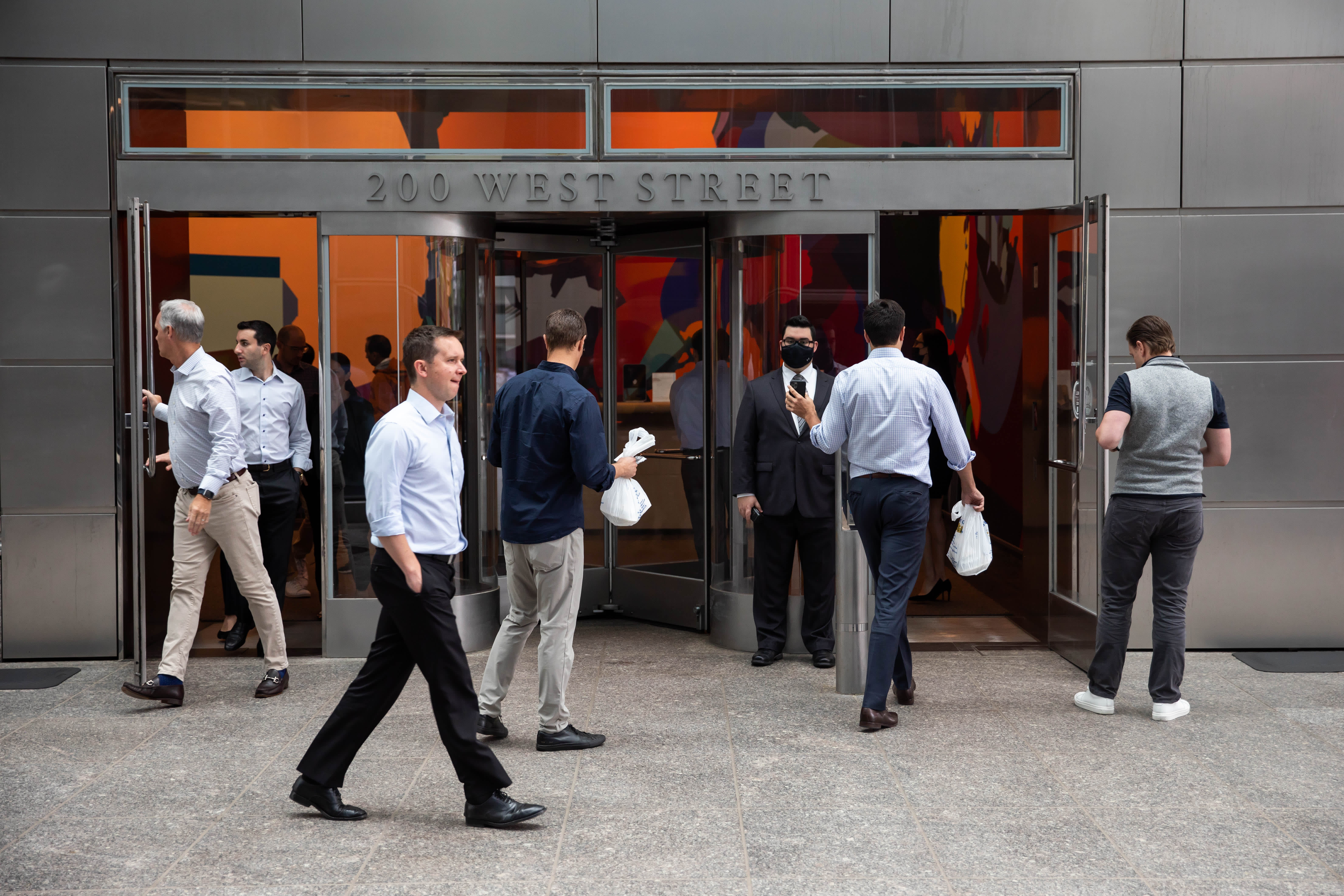Only 28% of Manhattan office workers are back at their desks and fewer than half will return by January, according to a new survey.
Employers expect that 49% of office workers will return on an average weekday by January, according to a survey of 188 big employers in Manhattan by the Partnership for New York City. That’s up from the current level of 28%, yet the survey suggests that remote work will endure long after January and reduce demand for office space in New York.
According to the survey, more than a third of employers expect their office space needs in Manhattan will decline over the next five years, and 13% expect a reduction in their New York City workforce.
“Post-pandemic, remote work is here to stay,” said Kathryn Wylde, president and CEO of the Partnership for New York City, the city’s leading business group. “There is going to be a permanent relook at keeping offices and jobs in New York City.”
Office vacancy rates in New York City are now at a 30-year high of 18.6%. The value of the city’s commercial real estate has fallen by $28.6 billion, or 16.6%, reducing property tax revenue by up to $1.7 billion this fiscal year, according to a recent report from New York State Comptroller Thomas DiNapoli. Property taxes are the largest source of revenue for New York City, and commercial property is the largest source of property taxes, so continued weakness in the office sector could prove costly for the city’s budget.
While commercial real estate landlords and developers say leasing activity is strong and workers will return to the office, many employers say the city’s high taxes, long commutes and high costs could prolong any recovery in the commercial sector.
By January, only 13% of Manhattan office workers are expected to be in the workplace five days per week, according to the survey. A third will be in three days per week, 15% will be in two days per week, 7% will be in one day per week and 21% will still be fully remote.
The industry with the highest expected average daily attendance in January will be real estate (80%) followed by law firms (61%) and financial services (47%). The industries with the lowest expected attendance in January will be accounting (36%), consulting (30%) and tech (24%).
Wylde said that in addition to workers staying remote, the city is grappling with high-earning business owners and financial partners leaving New York for tax reasons and taking their companies and workforce with them.
“The danger is that when the high earners leave, they take operations with them,” Wylde said. “So we hear now of operations in asset management and other areas, not just individual high earners, but the real business operations moving to Texas, to Tennessee, to Florida.”
Wylde said 22% of financial firms plan to reduce their New York City-based workforce in the next five years — an alarming number, given that financial-services are the economic backbone of New York City.
“What’s going to happen over the next 5 to 10 years in terms of our economic and tax dependence on a population that now knows its highly mobile,” she said.
